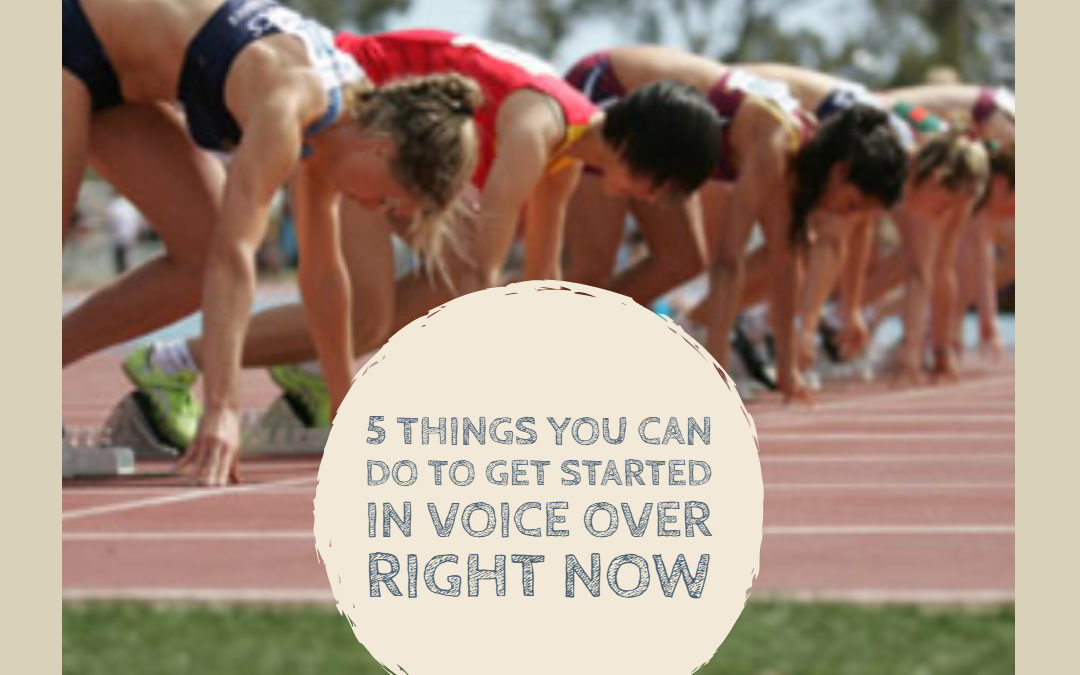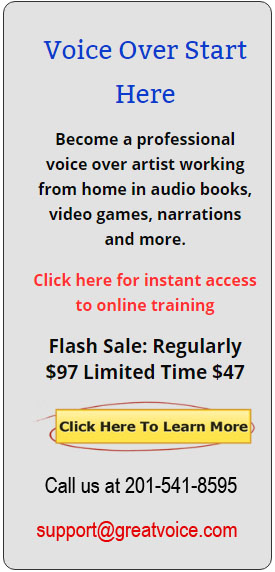“You have a purpose. It will sometimes shimmer just out of easy reach…
… and it will sometimes be in your face, like a flashbulb.”
-John Carlton, author and copywriter
Nice image, isn’t it.
Carlton’s a friend and I think he really nailed the sentiment.
What the heck am I here for? What’s my map for the road ahead?
You’re reading this because there’s a microphone in your life. Maybe it’s in the future, maybe it’s on your desk.
And that mic isn’t just a tool of the voice over trade. It’s a gateway to whatever brought you here in the first place.
The urge, the need to create through the spoken word; the desire for some extra cash and the fun and security that comes with it; the satisfaction of creative recognition, contribution, collaboration…the freedom to make your own hours and be your own boss.
So in this week’s Inside Voice Over I’m going to share five practical things you can do right now to start your voice over journey in the New Year.
Today I want to answer the number one question I get, which is, “How do you get started in voice over?” So people are clueless. They go out and they buy equipment and they join expensive online casting sites, and they don’t get results. So let’s see if I can help today. So I’ve got five things you can do to get started in voice over right now. Let’s take a look at them.
Number one actually is what I call low hanging fruit. And that means you look around your world, and you tell your your inner circle, people at work, friends, and things like that, if they know anybody in the business, somebody they might be able to refer you to. So when I started out, I got my first big break, I got a national commercial because I had a girlfriend that worked at an ad agency. Now, I did have chops. I was ready to go, but she referred me to my first job, and it all started from there.
Number two is, I think you should target a voice over niche as soon as you can, and that’s before you buy a microphone, before you buy equipment. You need to give some thought into whether you want to work. There’s 14 voice over niche markets that I have identified, but roughly there’s two types of niches. There are commercial niches, which are broadcast, let’s put it this way, niches of spots that are broadcast on television and radio or cable. That’s one group of voice over opportunities. And the other group is the non-broadcast opportunity. Lots and lots of voice over niche markets in non-broadcast.
So let me give you an example of what’s in each one. So in the commercial voice over niche, you have obviously commercials themselves, but you also have promos for television. Those are those announcements in between the TV shows, and you have the same thing for radio. That’s known as radio imaging. It’s not for everybody, but if you might have done some radio work in the past, if you can speak quickly and with energy, it might be a niche you’d want to explore. You have political advertising. We all know what political ads are, and cartoons. So those are the broadcast voice over niches. Think about those.
Then on the other hand, you have the non-broadcast niches, which are e-learning, which is how to teach anybody to do anything really, used by corporations, by learning, by education these days. You have corporate audio, which is internal sales and training videos, videos for trade shows, and websites and things like that. You have medical narrations, you have phone prompts, which is where I’ve made my voice over fortune, as the voice of Citibank, and before that, the voice of AT&T. You have video games, you have audio books, so those are the non-broadcast niches, right?
So the first thing you should do is give some thought into which general area you want to pursue, then you buy a good USB microphone. Now, a USB mic plugs directly into your computer or laptop, and the great thing about it is, inexpensively, like between $100 and $200 bucks, you can get a good quality mic that’ll allow you to start playing around with your voice at home, right? And by inexpensive, I mean in some types of mics. The Apogee is a really good one we recommend, and also the Yeti. So those two types of microphones are a good place to start.
Then you want to get some software. So you can download free software. It’ll be just fine. Audacity, lots of people like that, or for under $100 bucks you can invest in a Sound Forge or Adobe, or for the Mac, you can get TwistedWave as well. So then number four is I want you to play around with that software and start learning how to use it.
And then number five is find a great coach. Give us a call. We have a voice over bootcamp immersion experience where you spend two and a half days with us, and we will jumpstart your career teaching you everything from how to perform voiceovers, to how to market your services, to how to set up your home studio. So those are your options. Five ways you can get started right now.
Watch this week’s short training video Here Now
After you watch the video be sure to leave a comment. I always love to hear from you so I can support you as you grow your voice over career.
Happiest of holidays from all of us at The Great Voice Company.
I’m so glad you’re here.
Susan Berkley
Signature voice of Citibank
Founder, The Great Voice Company



Great advice as always Susan.
Hoping to officially reconnect in 2020 even though the path isn’t yet clear.
Merry Christmas, Happy Hanukkah, and Happy Holidays to you, Mark, and your friends and family. Celebrate, relax, and stay safe!
Good advice Susan, as is all your advice related to voice!
Thank you for sharing, and I look forward to working with you in 2020.
Regards,
Wes
Thanks Susan! I’ve had plenty of experience doing singing voiceover work and now I’m trying to break into the spoke side of the voiceover profession. I already have a professional recording studio complete with a really great microphone ad plenty of digital audio software. At some point in he not too distant future I hope to amass the necessary funds to attend your bootcamp. I can tell that that would be an invaluable resource.
Thanks for the video and have a really great Holiday Season!
Cheers!
TK